The Catalyst Killing - [34]
X
‘So, who posted the threatening letter to Marie Morgenstierne? Trond Ibsen? Kristine Larsen? Anders Pettersen?
Or one of Falko Reinhardt’s parents?’
Patricia helped herself to a piece of salmon, and smiled briefly.
‘Possibly all five of them. But it could in theory have been a lot of other people too. Miriam Filtvedt Bentsen, for example, whom I do not think we should let out of our sight quite yet. Or Falko Reinhardt himself, if he is, as I believe, still sneaking around out there. Or some completely unknown person who, for some reason or another, planned to kill Marie Morgenstierne, and wanted to confuse us by making it look as though Falko Reinhardt’s family and closest friends were to blame. The latter is less likely, but still possible. And furthermore, the murderer does not necessarily need to be the person who wrote the letter. Murders in open spaces can be complicated things.’
Patricia did not look as though she was particularly worried and, with a smile, she started to eat her salmon.
‘You mean, for example, that the murderer may also be the father of her unborn child?’
Patricia nodded.
‘Perhaps, yes. As for who the father might be, it would be natural to assume that it might be one of the others in the group, but it is also possible that she had been sleeping with a fellow student on the quiet, or had a fling with some passer-by who we know nothing about. Whatever the case, we have two alternatives that are both very interesting. Either Marie Morgenstierne had recently been unfaithful to her absent fiancé, or her absent fiancé has been in the area again.’
‘What about the Nazi network lead?’
Patricia nodded.
‘It could mean everything – or nothing. You should also try to talk to this Henry Alfred Lien, even though it’s a slightly longer trip, and even though he does not appear to be very communicative.’
I nodded in agreement.
‘Well, it looks like I may not be able to get much done in Oslo tomorrow, so I had wondered about a day trip to Valdres, both to speak to Henry Alfred Lien and to have a look at the cabin. What do you think?’
Patricia helped herself to another piece of salmon.
‘I think it might be worthwhile. Then we can perhaps solve the mystery of how Falko Reinhardt managed to leave the cabin. The first theory that has to be checked is the window. If Miriam Filtvedt Bentsen is right and the window was too small for Falko Reinhardt to get out of, then we are left with two alternatives, as far as I can see.’
She fell silent and chewed thoughtfully on a mouthful of salmon.
‘And would you perhaps like to share what these two alternatives might be?’
Patricia’s smile was sugar-sweet.
‘Of course. I apologize, but I thought that would be quite obvious to you too. Falko could have sneaked out down the hall. But given that the door to the next room was ajar, and both the people who were in there were awake, the theory doesn’t quite work unless Miriam Filtvedt Bentsen and Kristine Larsen are both lying to cover for him – which is not entirely unfeasible. If they are not, though, that leaves only one possibility, and it is the one that I have always thought to be true.’
Patricia was obviously still more than happy to make fun of me. She demonstratively refrained from saying anything more until I asked.
‘So, according to this theory, how did Falko Reinhardt leave the cabin without the other five noticing, if he used neither the window nor the door?’
Her smile was teasing and she was clearly enjoying the situation.
‘According to the theory, he didn’t!’ she said, with her smuggest smile.
I glowered back. Patricia realized she was on dangerous ground and quickly changed her tone.
‘That is to say, he did of course leave the cabin at one point or another. But not while the other five were there, or between midnight and two o’clock in the morning. According to this theory, he hid himself away somewhere in the bedroom once his fiancée had fallen asleep and stayed there until the others left the cabin. Then he walked calmly out the door. And in that case, it is highly probable that he was the very person Miriam Filtvedt Bentsen claims to have seen making his way through the storm in the opposite direction shortly after.’
I had not for one moment thought about this possibility, but had to admit that it did not seem completely implausible.
‘We are missing a link in the form of a hiding place in the bedroom. It certainly does not sound entirely unreasonable, and is worth investigating as a possibility.’
Patricia nodded vigorously.
‘I realize that this may sound a bit odd. But soon it will be the unlikely that is most likely here, as what is most likely has proved to be not possible. It is becoming increasingly clear that a trip to Valdres tomorrow would be very sensible indeed. By coincidence, of course. But it is in fact a good idea.’
I accepted the compliment and nodded quickly in agreement.
‘In that case, perhaps I should take a guide with me? I would manage to find the cabin on my own, I’m sure, but would have no idea of who was in which room and what happened where…’
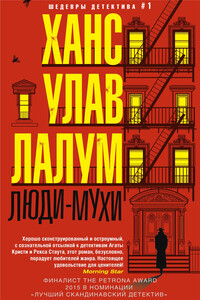
Убит бывший лидер норвежского Сопротивления и бывший член кабинета министров Харальд Олесен. Его тело обнаружено в запертой квартире, следов взлома нет, орудие убийства отсутствует. На звук выстрела к двери Олесена сбежались все соседи, но никого не увидели. Инспектор уголовного розыска Колбьёрн Кристиансен считает, что убийство, скорее всего, совершил кто-то из них. Более того, он полагает, что их показания лживы.
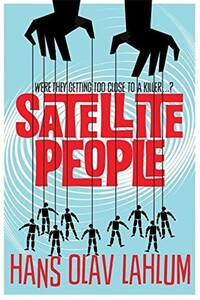
A gripping, evocative, and ingenious mystery which pays homage to Agatha Christie, Satellite People is the second Norwegian mystery in Hans Olav Lahlum's series. Oslo, 1969: When a wealthy man collapses and dies during a dinner party, Norwegian Police Inspector Kolbjorn Kristiansen, known as K2, is left shaken. For the victim, Magdalon Schelderup, a multimillionaire businessman and former resistance fighter, had contacted him only the day before, fearing for his life. It soon becomes clear that every one of Schelderup's 10 dinner guests is a suspect in the case.
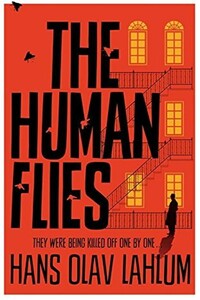
Oslo, 1968: ambitious young detective Inspector Kolbjorn Kristiansen is called to an apartment block, where a man has been found murdered. The victim, Harald Olesen, was a legendary hero of the Resistance during the Nazi occupation, and at first it is difficult to imagine who could have wanted him dead. But as Detective Inspector Kolbjorn Kristiansen (known as K2) begins to investigate, it seems clear that the murderer could only be one of Olesen's fellow tenants in the building. Soon, with the help of Patricia – a brilliant young woman confined to a wheelchair following a terrible accident – K2 will begin to untangle the web of lies surrounding Olesen's neighbors; each of whom, it seems, had their own reasons for wanting Olesen dead.
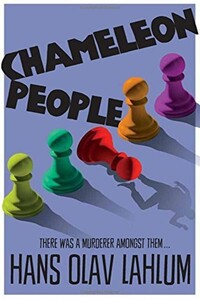
From the international bestselling author, Hans Olav Lahlum, comes Chameleon People, the fourth murder mystery in the K2 and Patricia series.1972. On a cold March morning the weekend peace is broken when a frantic young cyclist rings on Inspector Kolbjorn 'K2' Kristiansen's doorbell, desperate to speak to the detective.Compelled to help, K2 lets the boy inside, only to discover that he is being pursued by K2's colleagues in the Oslo police. A bloody knife is quickly found in the young man's pocket: a knife that matches the stab wounds of a politician murdered just a few streets away.The evidence seems clear-cut, and the arrest couldn't be easier.
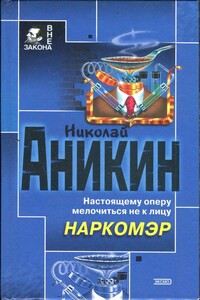
Тупик. Стена. Старый кирпич, обрывки паутины. А присмотреться — вроде следы вокруг. Может, отхожее место здесь, в глухом углу? Так нет, все чисто. Кто же сюда наведывается и зачем? И что охраняет тут охрана? Да вот эту стену и охраняет. Она, как выяснилось, с секретом: время от времени отъезжает в сторону. За ней цех. А в цеху производят под видом лекарства дурь. Полковник Кожемякин все это выведал. Но надо проникнуть внутрь и схватить за руку отравителей, наживающихся на здоровье собственного народа. А это будет потруднее…

«Посмотреть в послезавтра» – остросюжетный роман-триллер Надежды Молчадской, главная изюминка которого – атмосфера таинственности и нарастающая интрига.Девушка по имени Венера впадает в кому при загадочных обстоятельствах. Спецслужбы переправляют ее из закрытого городка Нигдельск в Москву в спецклинику, где известный ученый пытается понять, что явилось причиной ее состояния. Его исследования приводят к неожиданным результатам: он обнаруживает, что их связывает тайна из его прошлого.
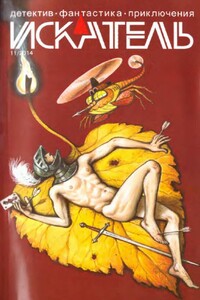
«ИСКАТЕЛЬ» — советский и российский литературный альманах. Издаётся с 1961 года. Публикует фантастические, приключенческие, детективные, военно-патриотические произведения, научно-популярные очерки и статьи. В 1961–1996 годах — литературное приложение к журналу «Вокруг света», с 1996 года — независимое издание.В 1961–1996 годах выходил шесть раз в год, в 1997–2002 годах — ежемесячно; с 2003 года выходит непериодически.Содержание:Анатолий Королев ПОЛИЦЕЙСКИЙ (повесть)Олег Быстров УКРАДИ МОЮ ЖИЗНЬ (окончание) (повесть)Владимир Лебедев ГОСТИ ИЗ НИОТКУДА.
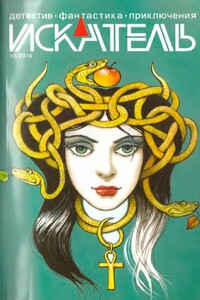
«ИСКАТЕЛЬ» — советский и российский литературный альманах. Издается с 1961 года. Публикует фантастические, приключенческие, детективные, военно-патриотические произведения, научно-популярные очерки и статьи. В 1961–1996 годах — литературное приложение к журналу «Вокруг света», с 1996 года — независимое издание.В 1961–1996 годах выходил шесть раз в год, в 1997–2002 годах — ежемесячно; с 2003 года выходит непериодически.Содержание:Олег Быстров УКРАДИ МОЮ ЖИЗНЬ (повесть);Петр Любестовский КЛЕТКА ДЛЯ НУТРИИ (повесть)
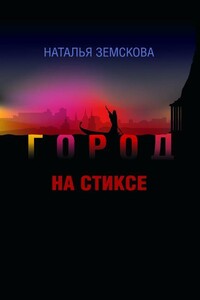
Наталья Земскова — журналист, театральный критик. В 2010 г. в издательстве «Астрель» (Санкт-Петербург) вышел её роман «Детородный возраст», который выдержал несколько переизданий. Остросюжетный роман «Город на Стиксе» — вторая книга писательницы. Молодая героиня, мечтает выйти замуж и уехать из забитого новостройками областного центра. Но вот у неё на глазах оживают тайны и легенды большого губернского города в центре России, судьбы талантливых людей, живущих рядом с нею. Роман «Город на Стиксе» — о выборе художника — провинция или столица? О том, чем рано или поздно приходится расплачиваться современному человеку, не верящему ни в Бога, ни в черта, а только в свой дар — за каждый неверный шаг.
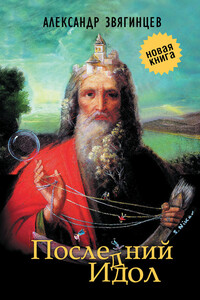
В сборник «Последний идол» вошли произведения Александра Звягинцева разных лет и разных жанров. Они объединены общей темой исторической памяти и личной ответственности человека в схватке со злом, которое порой предстает в самых неожиданных обличиях. Публикуются рассказы из циклов о делах следователей Багринцева и Северина, прокуроров Ольгина и Шип — уже известных читателям по сборнику Звягинцева «Кто-то из вас должен умереть!» (2012). Впервые увидит свет пьеса «Последний идол», а также цикл очерков писателя о событиях вокруг значительных фигур общественной и политической жизни России XIX–XX веков — от Петра Столыпина до Солженицына, от Александра Керенского до Льва Шейнина.